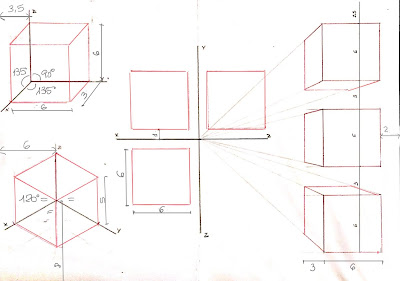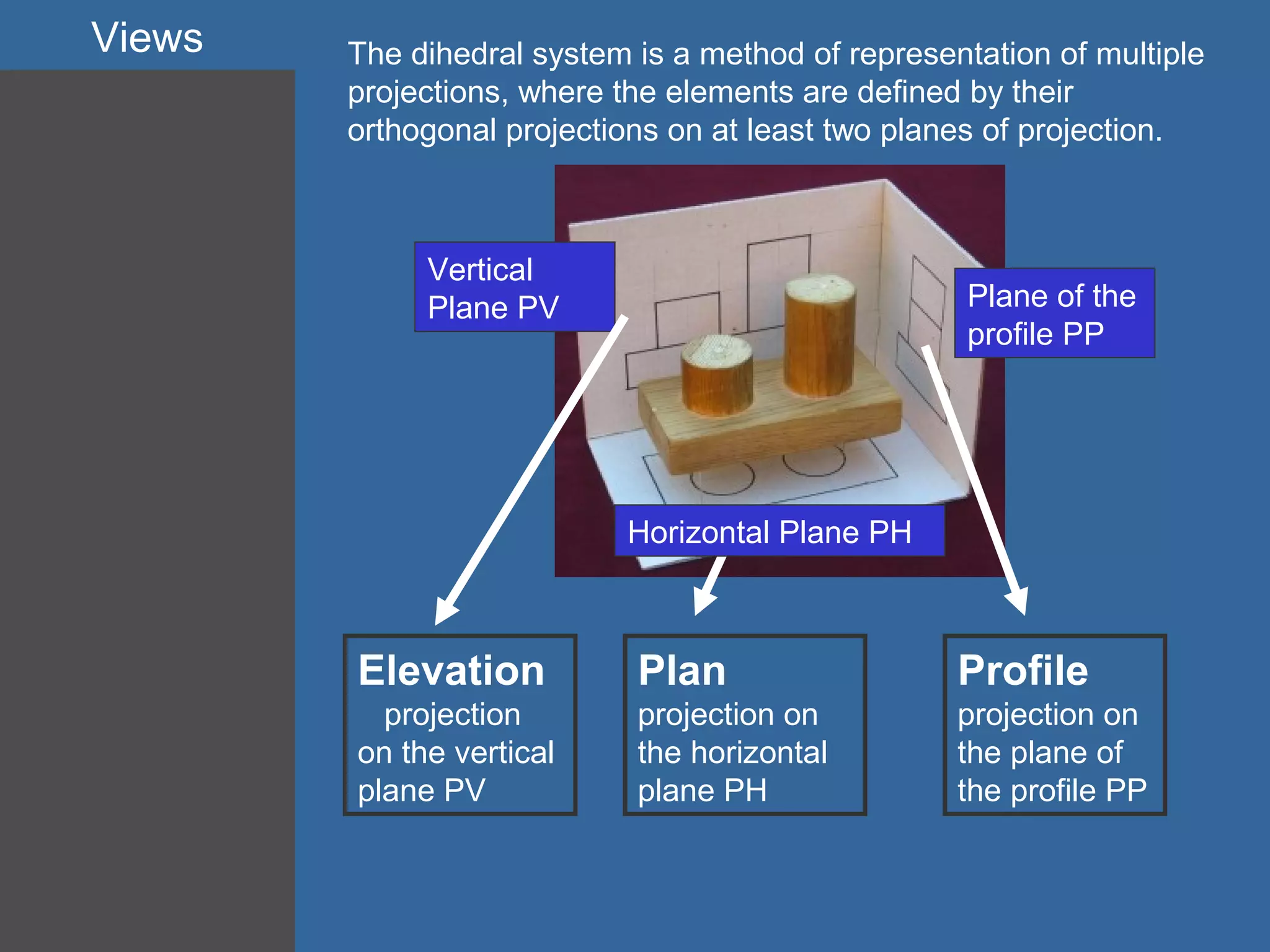DIHEDRAL, AXONOMETRIC, CAVALIER, CONICAL

DIHEDRAL


CAVALIER
CONICAL PERSPECTIVE DRAWING
ONE POINT LINEAR PERSPECTIVE
TWO POINTS LINEAR PERSPECTIVE

THREE POINTS LINEAR PERSPECTIVE

MORE ABOUT THE DIFFERENT SYSTEMS OF REPRESENTATION
DIHEDRAL, AXONOMETRIC, CAVALIER, CONICAL

DIHEDRAL


CAVALIER
CONICAL PERSPECTIVE DRAWING
ONE POINT LINEAR PERSPECTIVE
TWO POINTS LINEAR PERSPECTIVE

THREE POINTS LINEAR PERSPECTIVE

MORE ABOUT THE DIFFERENT SYSTEMS OF REPRESENTATION
The links between circumferences have a direct application in the construction of technical curves such as the oval, the ovoid or the spiral.
The ovoid is a flat and closed curve, symmetrical only with respect to its major axis, and formed by four arcs of circumference, of which two are equal and the other two are unequal.
The spiral is a flat, open and continuous curve that is configured by a point that moves uniformly along a straight line, this being fixed at a point through which it rotates with a constant angular value.
If the spiral is generated by regular polygons, it is called a volute.
Now you will learn how to draw Ovals, Ovoids and Spirals.
In spanish we call them "curvas técnicas". You will find that in english it is translated as either engineering or technical curves.
Here are some video tutorials for you to practice at home:
1- Draw an oval given the short axis CD.
2- Draw an oval given the long axis AB.
3- Draw an ovoid given the short axis AB.
4- Draw an involute of an equilateral triangle.
ACTIVITY EXTRA: THE FIBONACCI OR GOLDEN SPIRAL